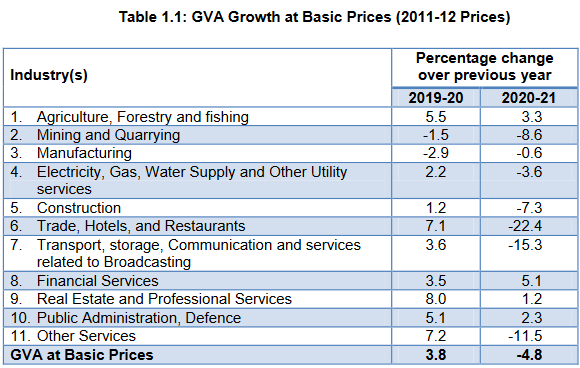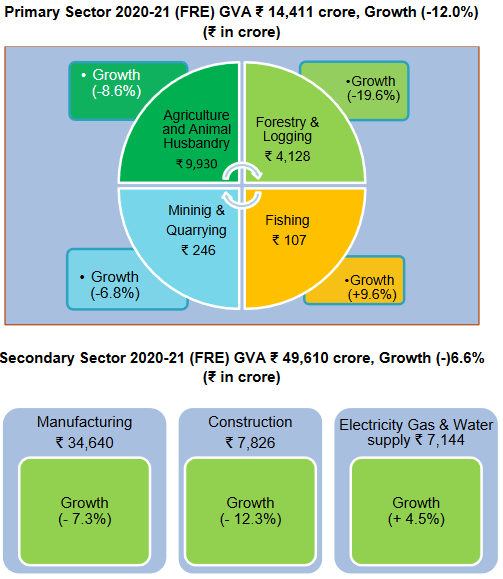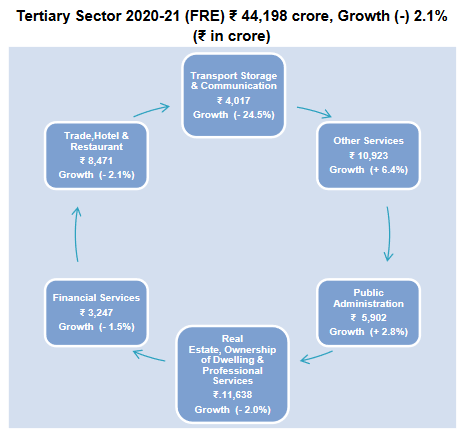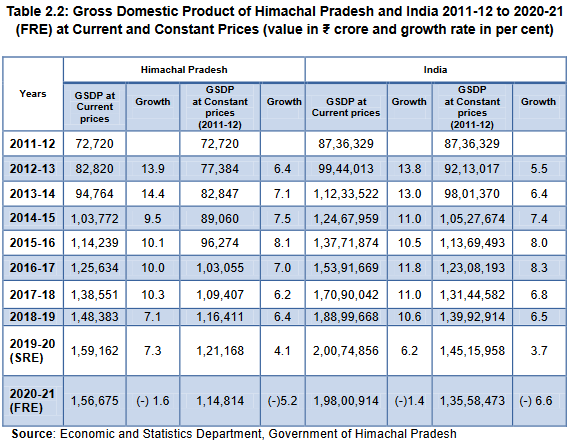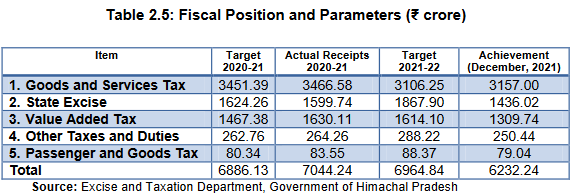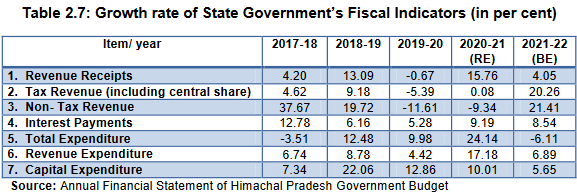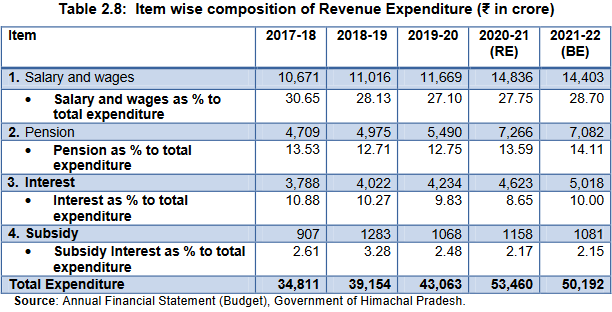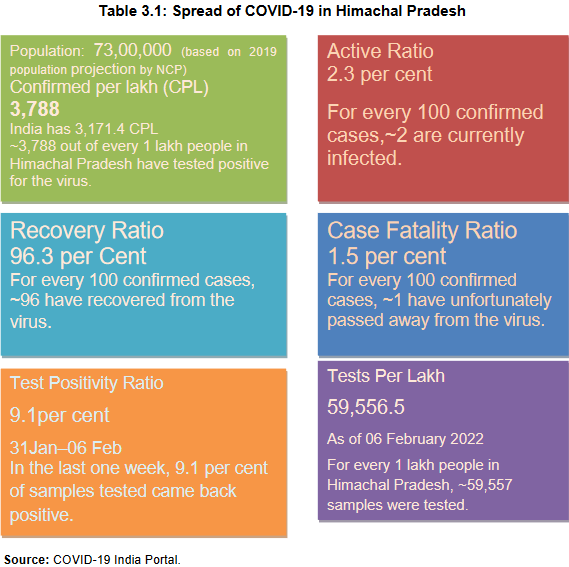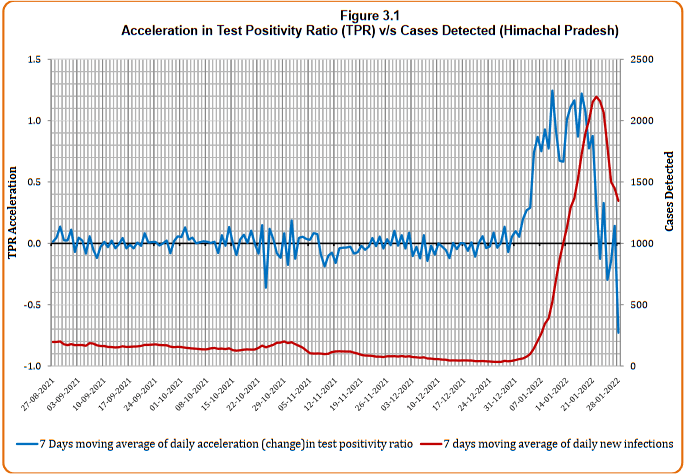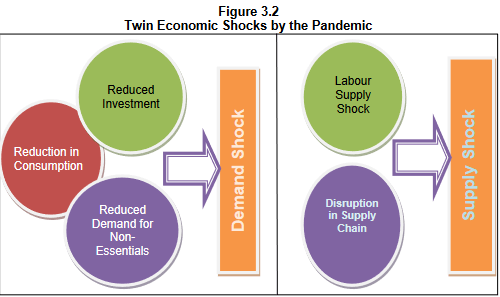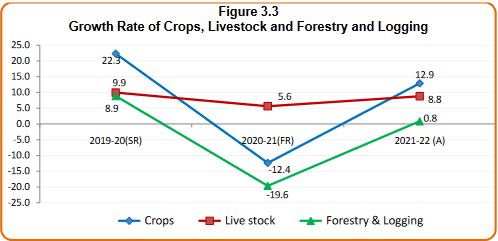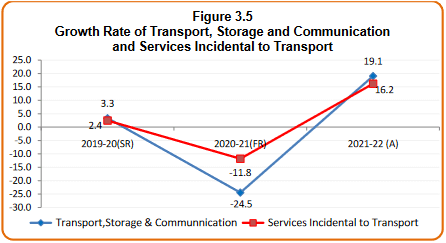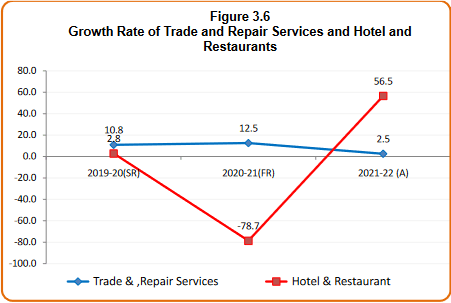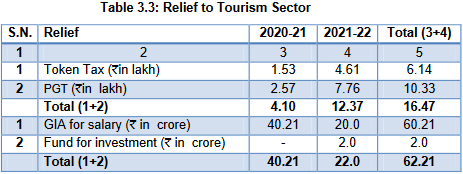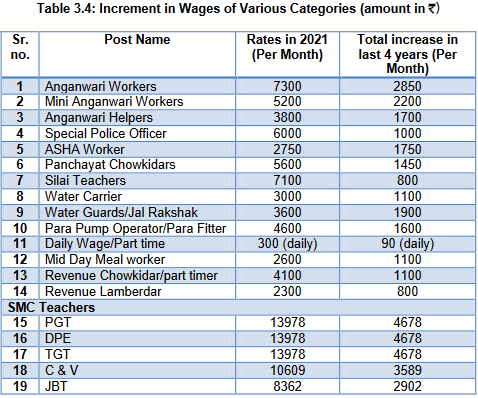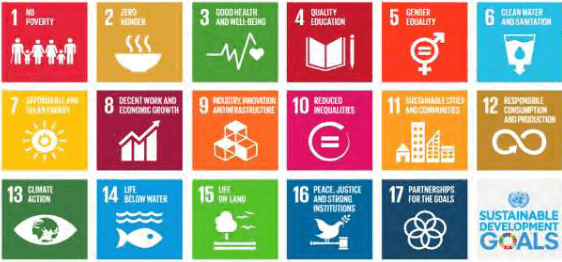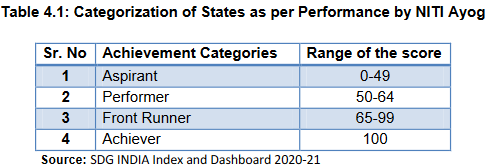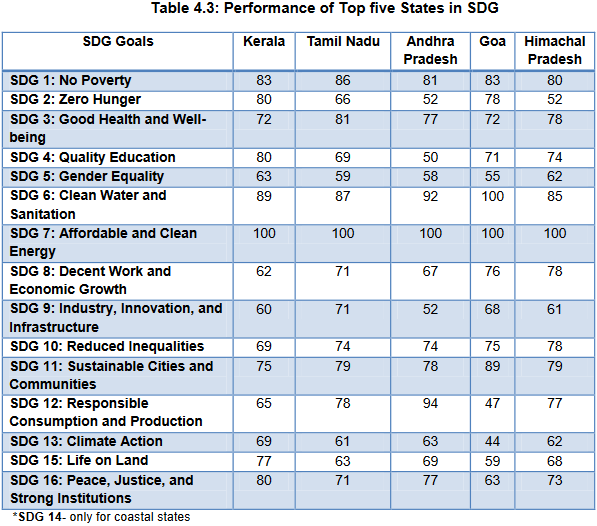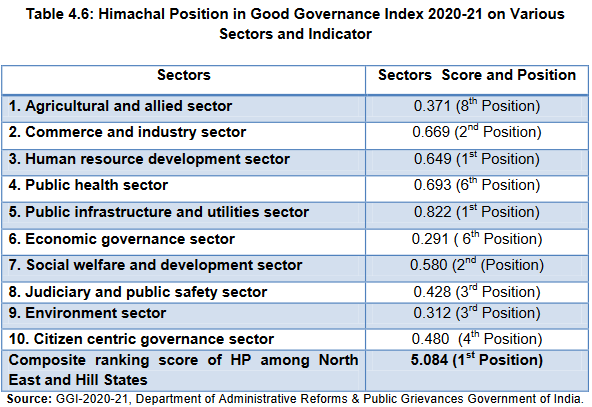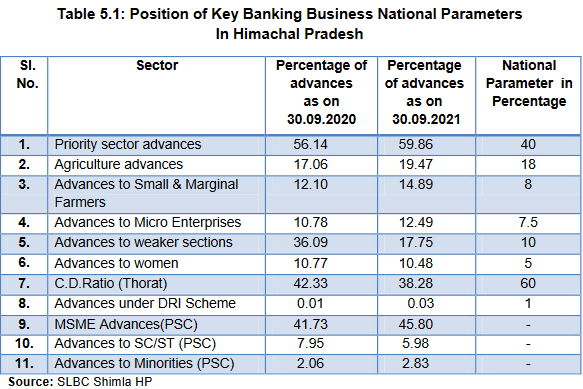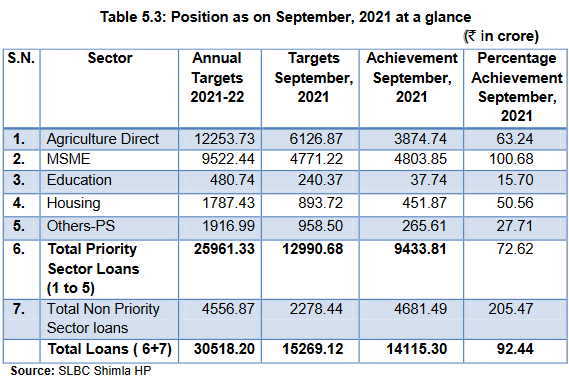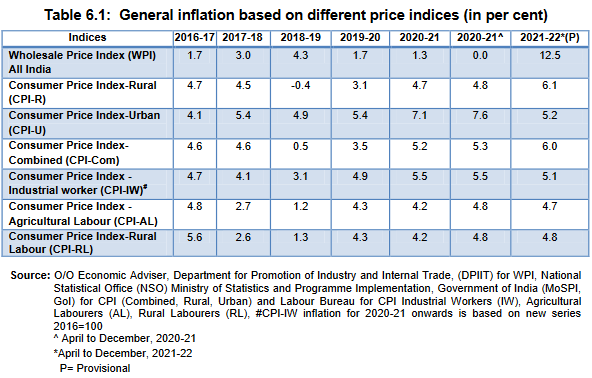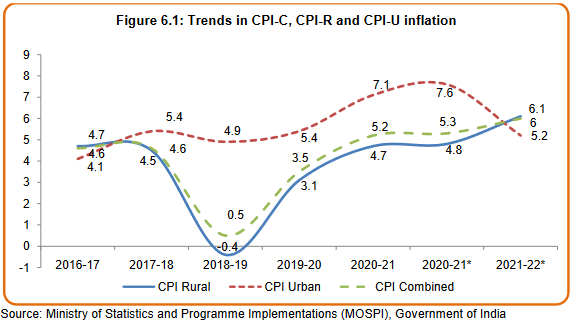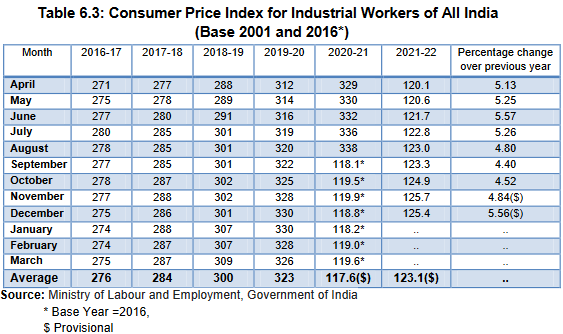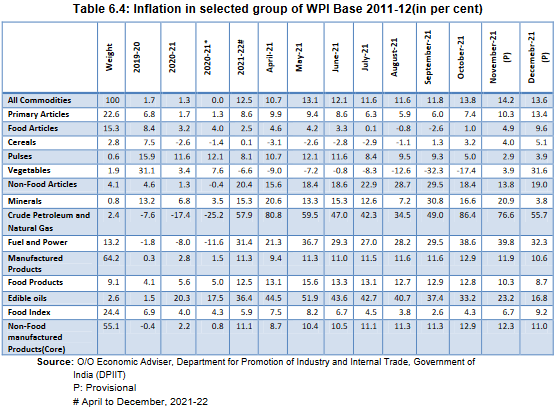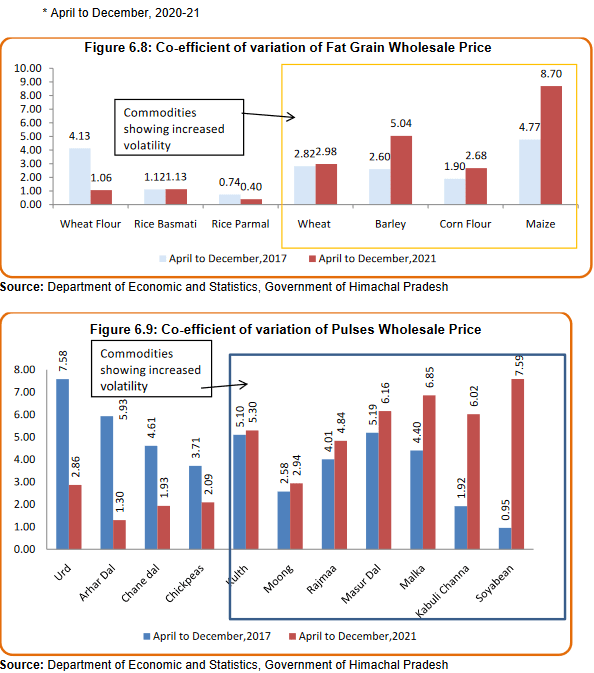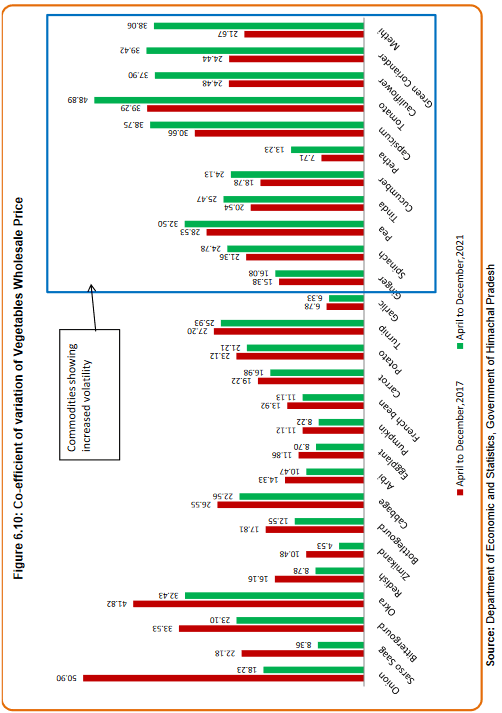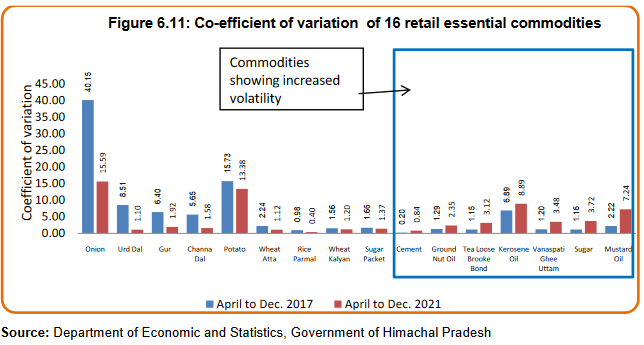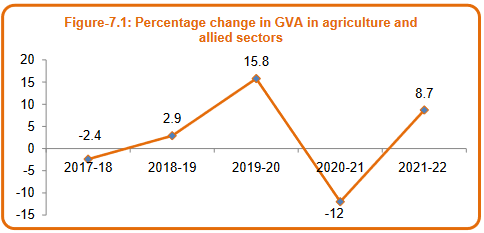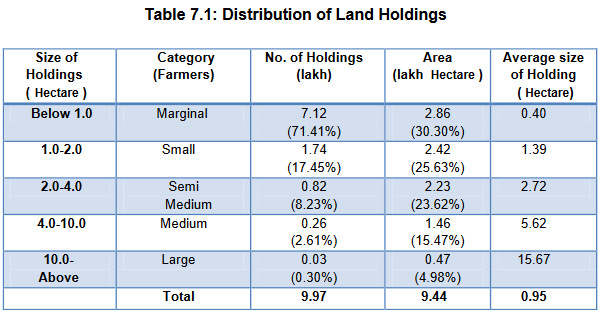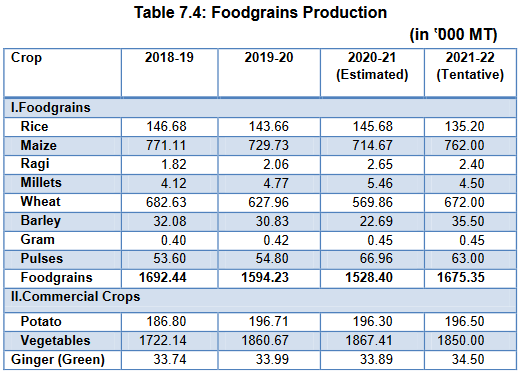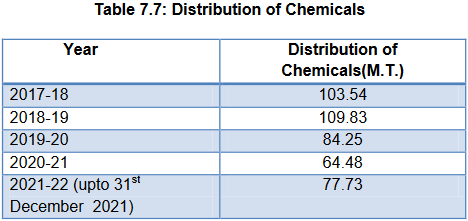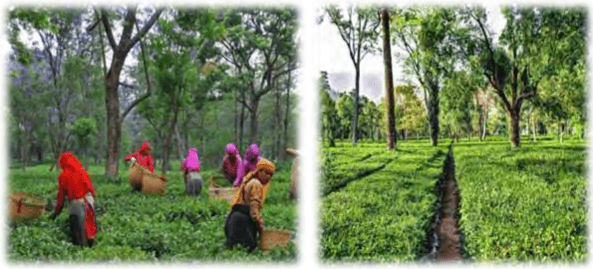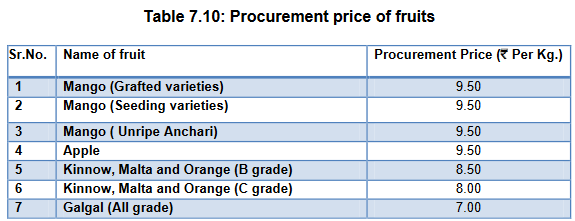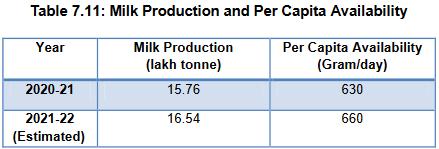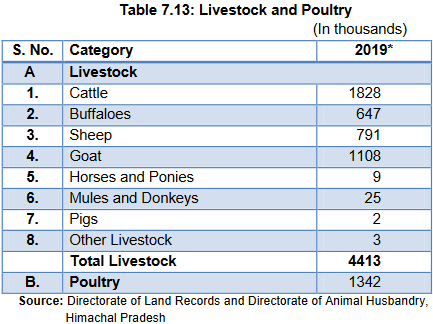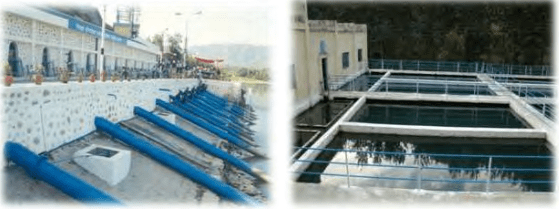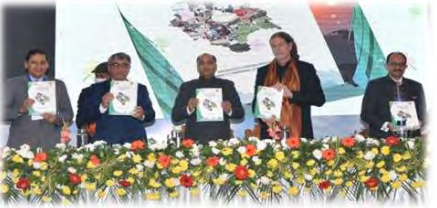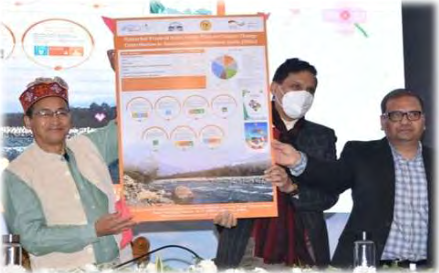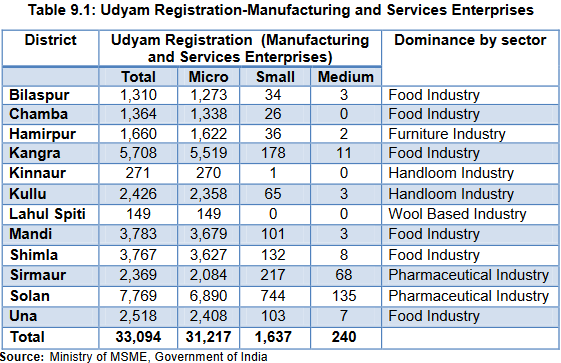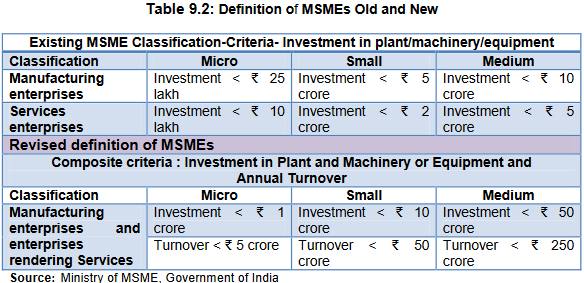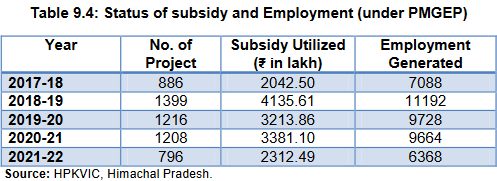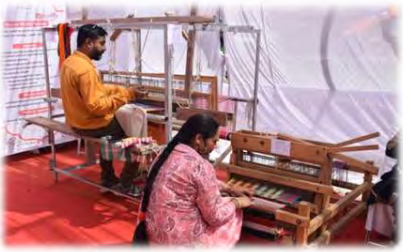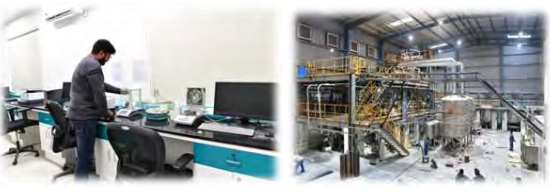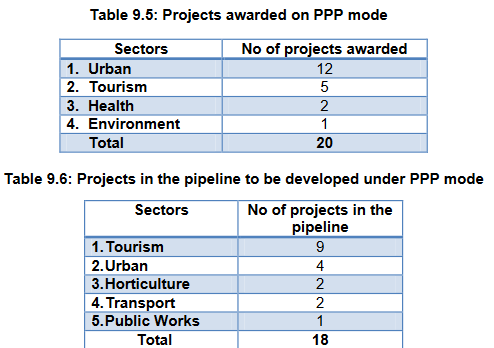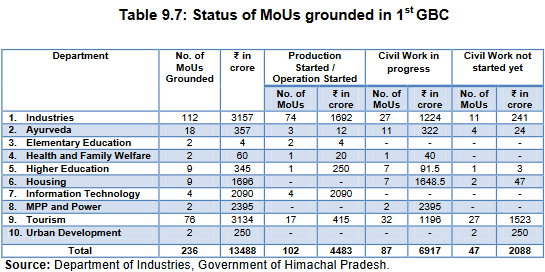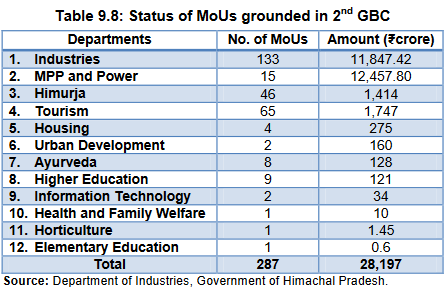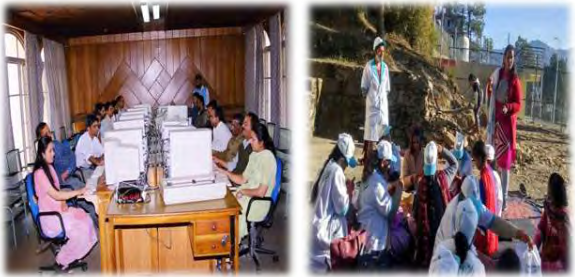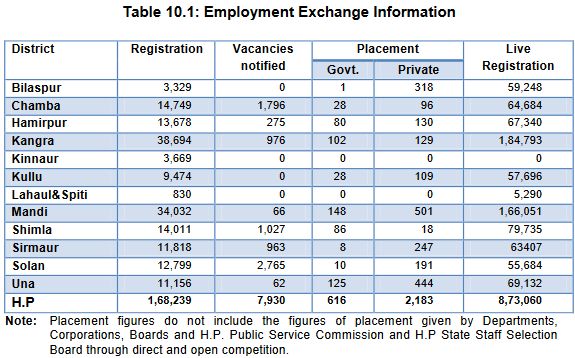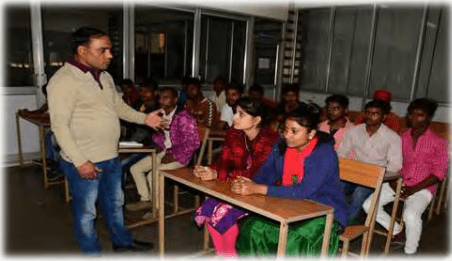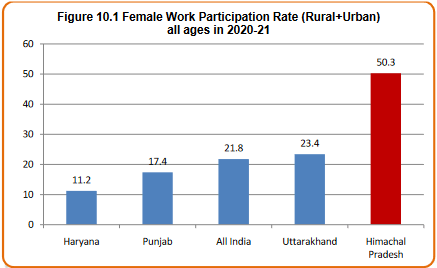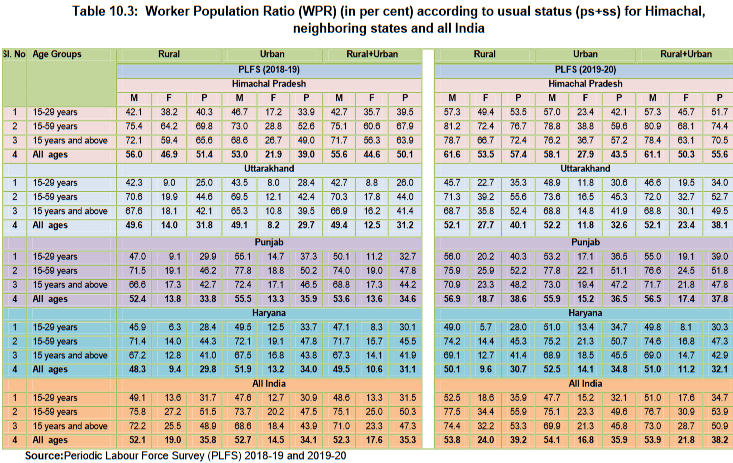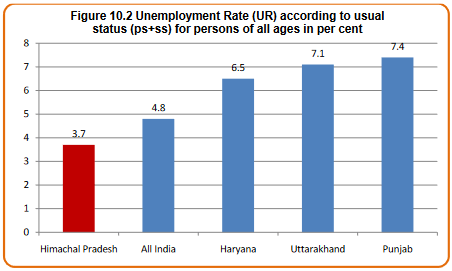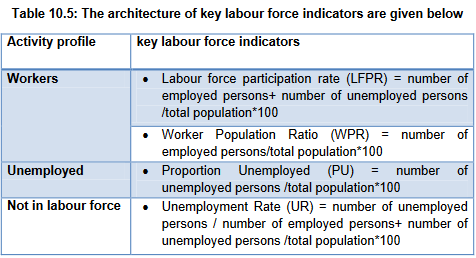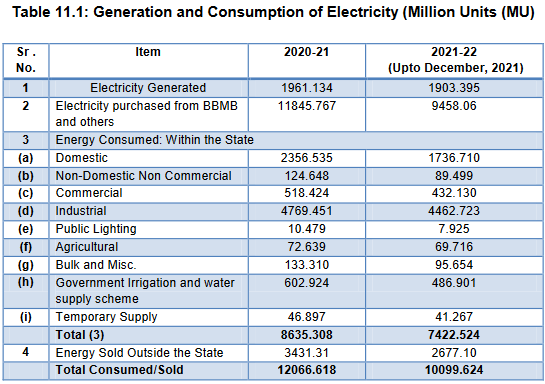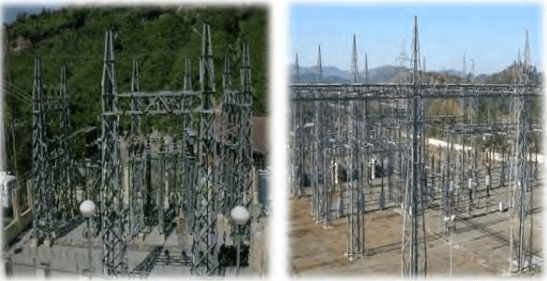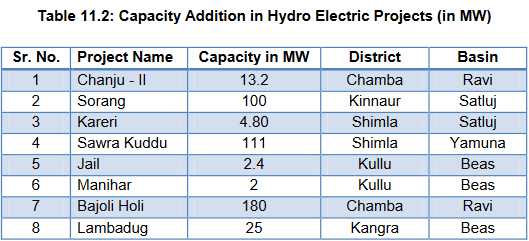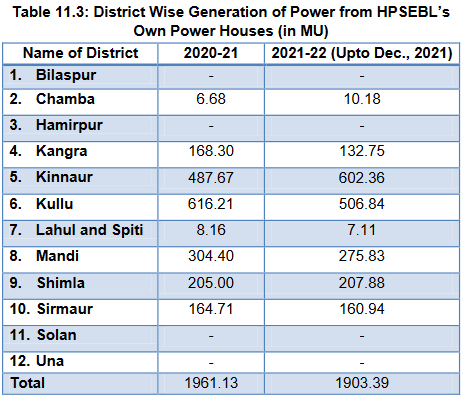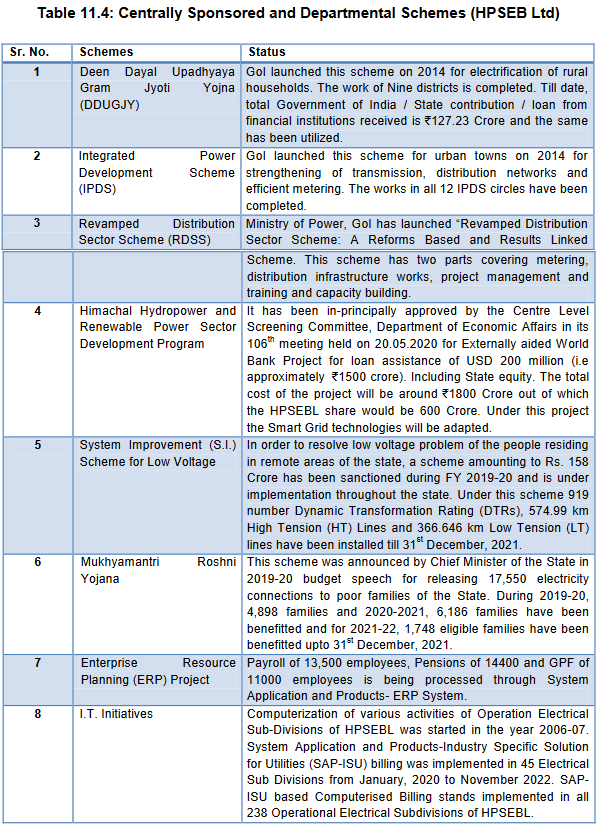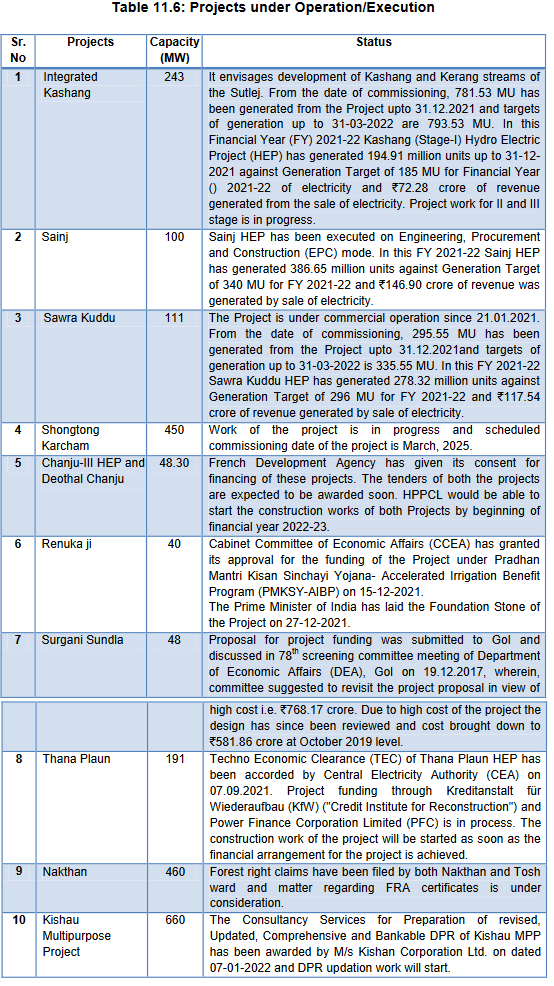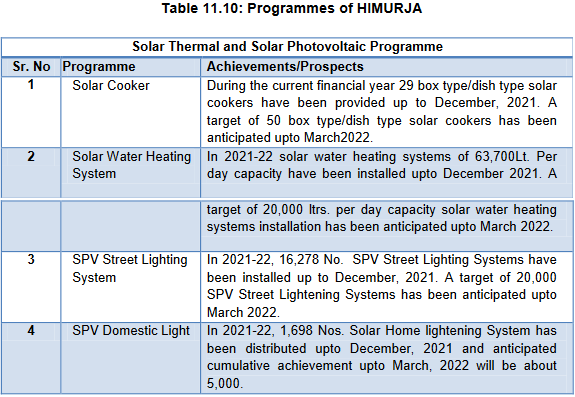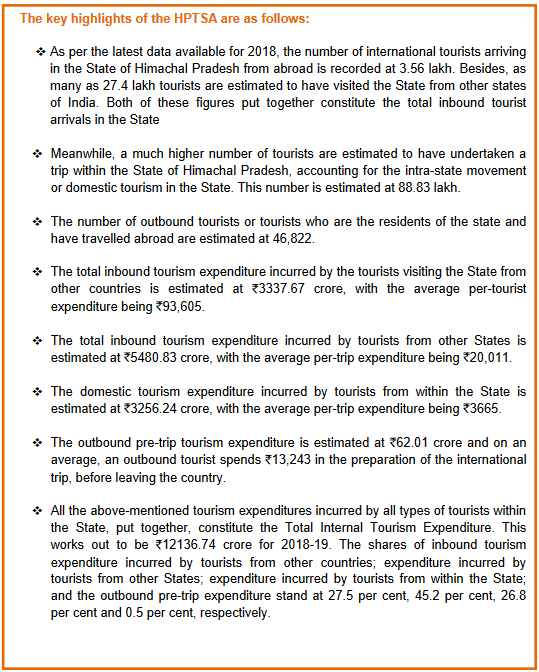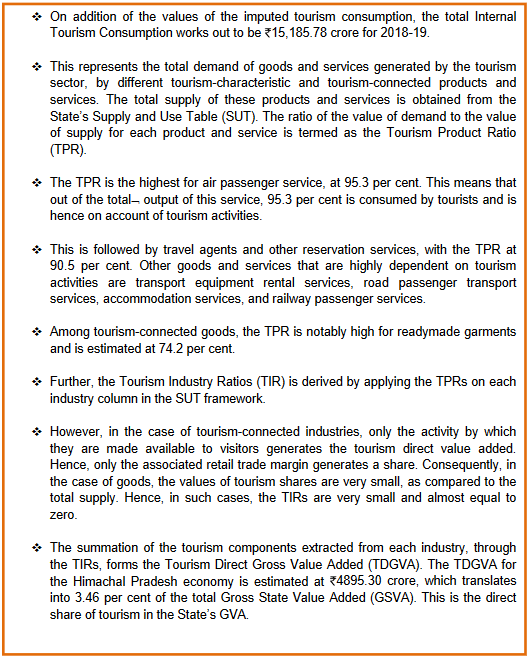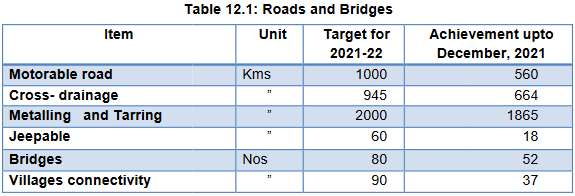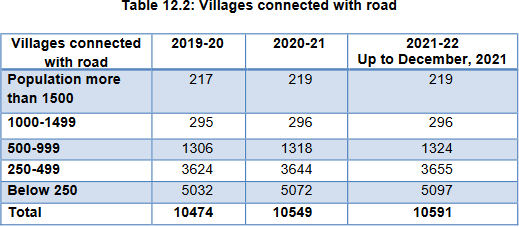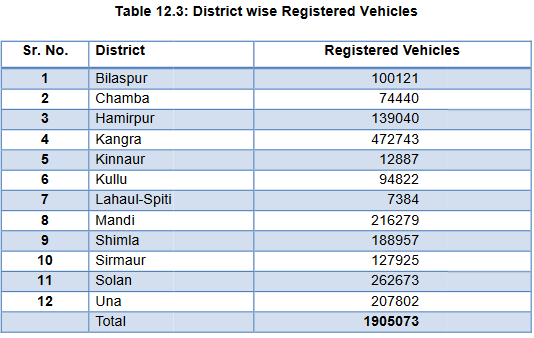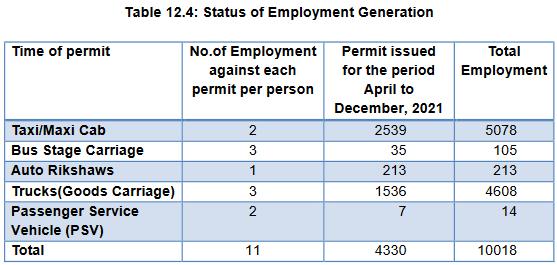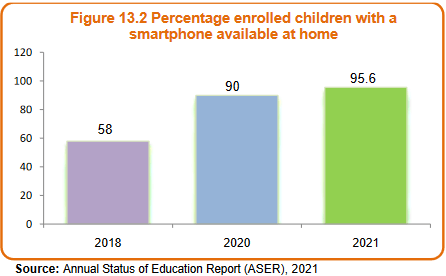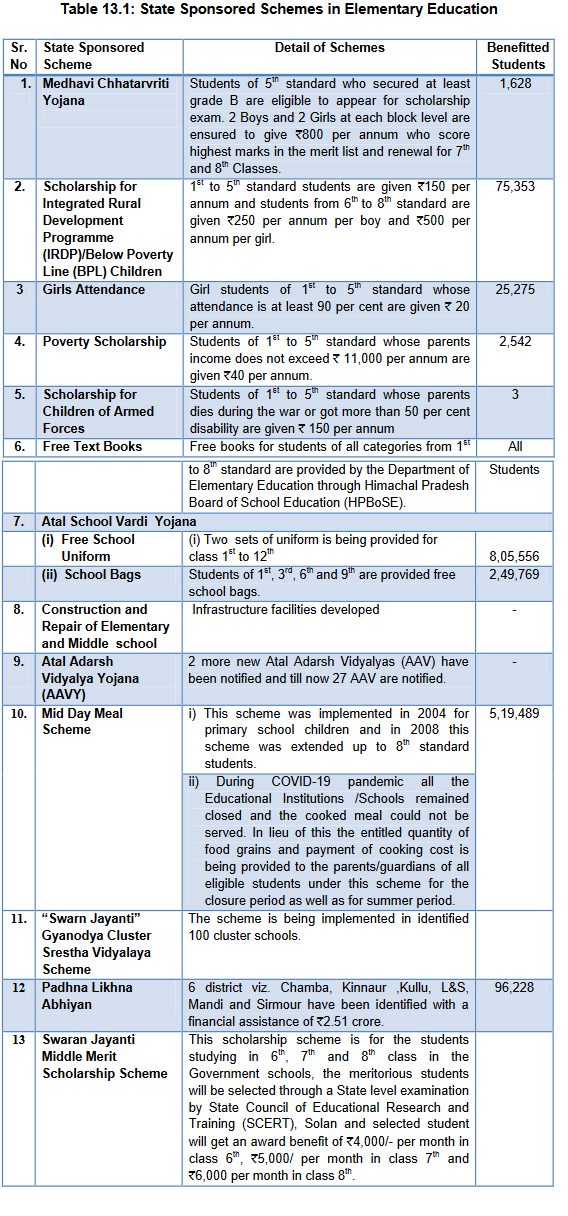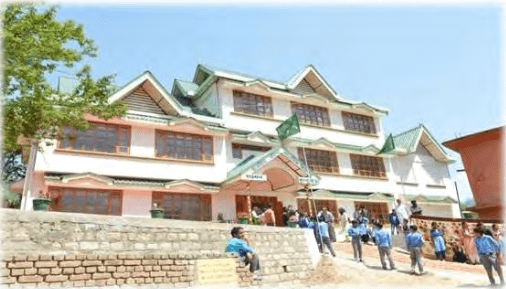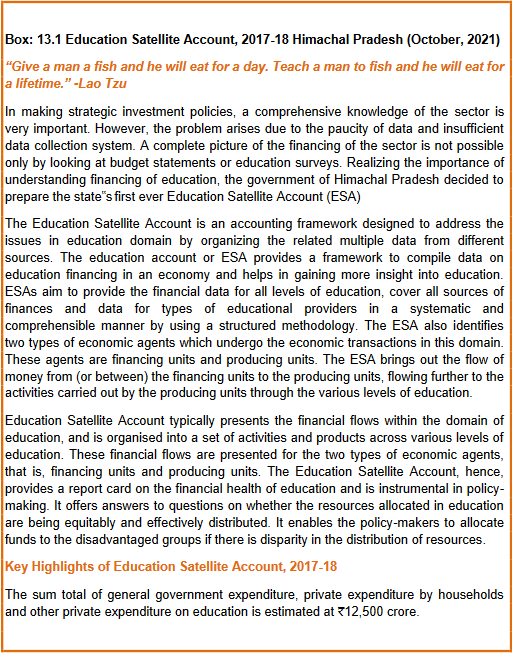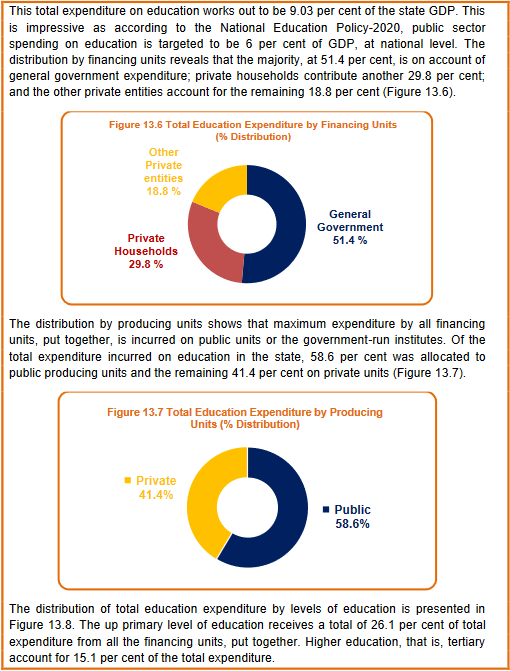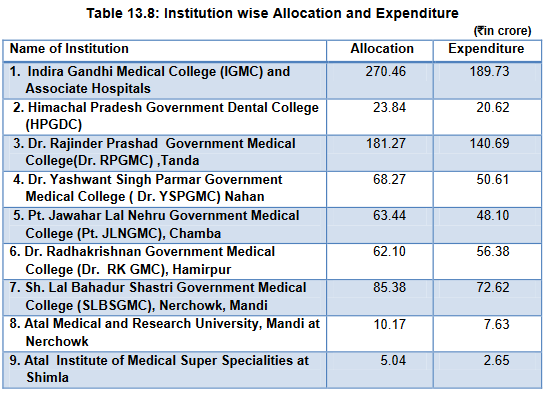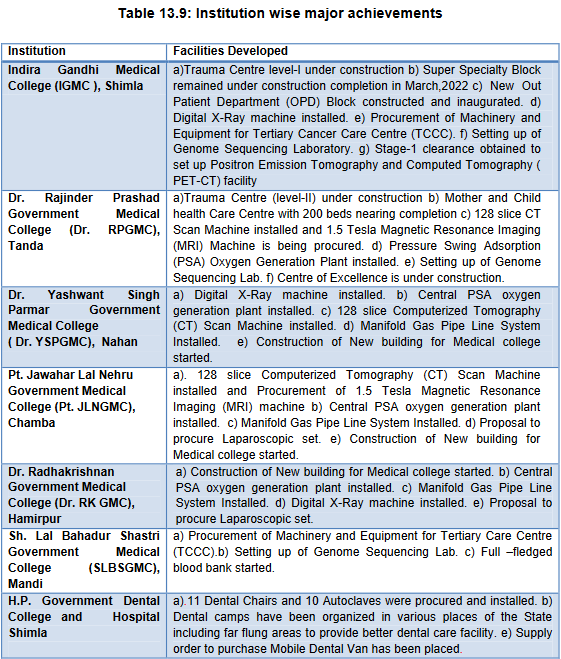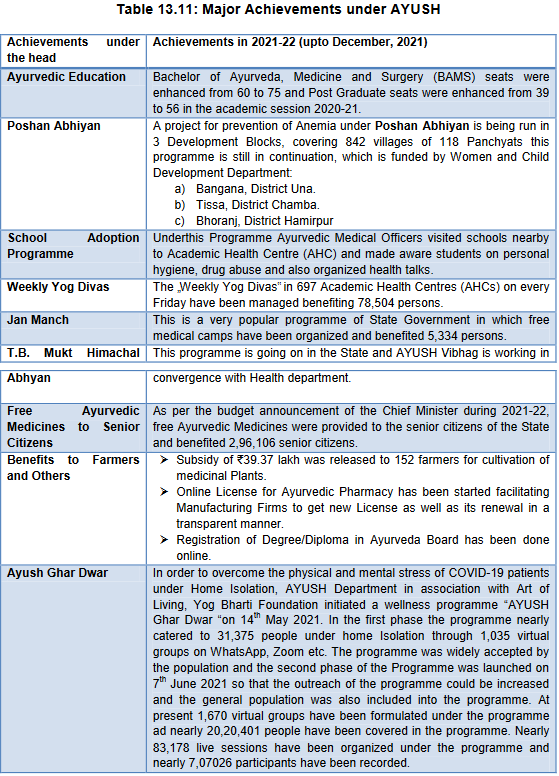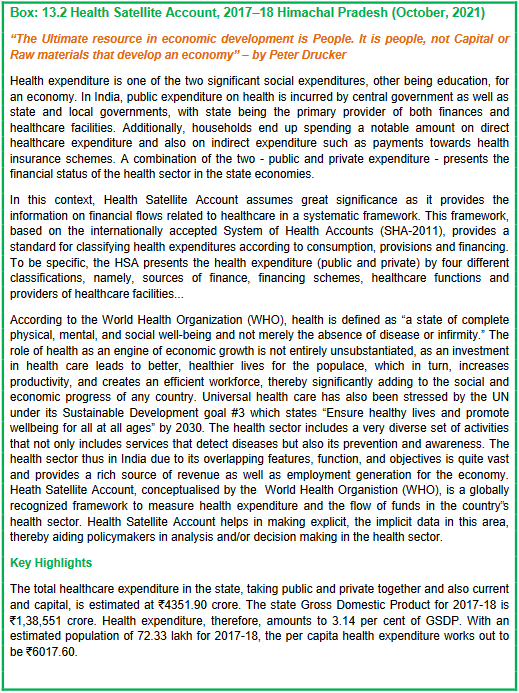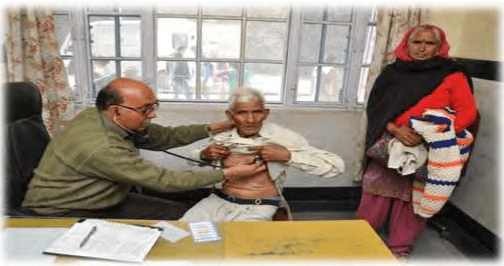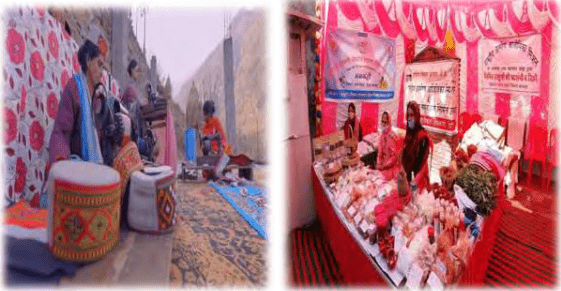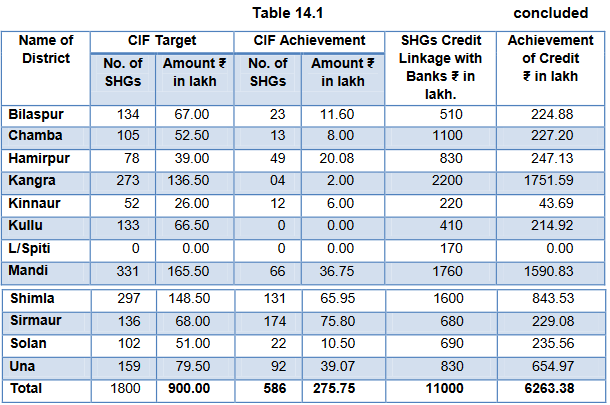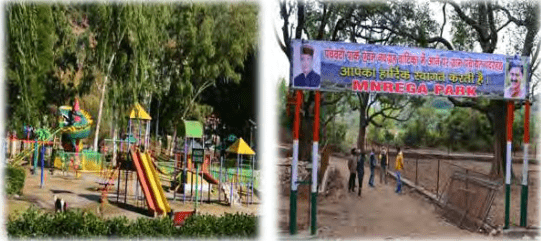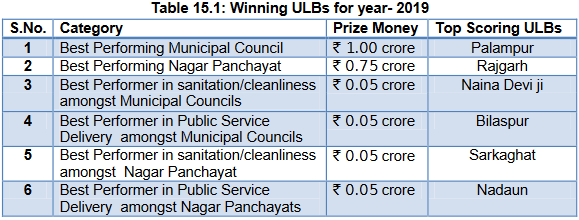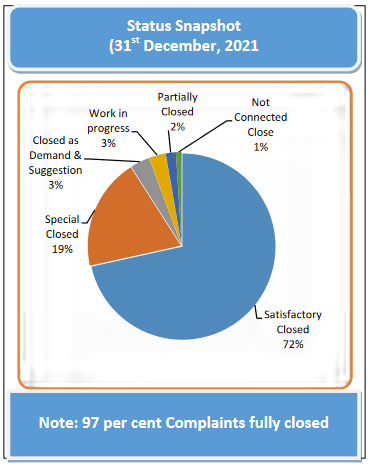Government of Himachal Pradesh has initiated several measures for speedy progress in the quality of life for people of the State through efficient policies and cooperation with Central Government. Himachal has a
vibrant economy due to steady efforts of the hardworking people of the State and by the implementation of progressive policies and programmes of the Central and State Government. Himachal has become a fast growing
economy. During 2020-21 the state economy contracted by
5.2 per cent due to COVID-19 pandemic but as per current estimates is expected to grow by 8.3 per cent during 2021-22 (Figure 1.1).
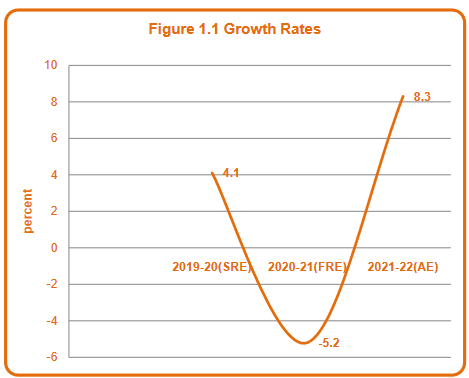
As per the Revised Estimates Gross State Domestic Product (GSDP) at current prices, is estimated at ₹ 1,56,675 crore in 2020-21 First Revised Estimate (FRE) as against ₹1,59,162 crore in 2019-20 Second
Revised Estimate (SRE) showed a decrease of 1.6 per cent during the year. GSDP at constant (2011-12) prices in 2020-21 (FRE) is estimated at ₹1,14,814 crore against ₹ 1,21,168 crore in 2019-20 (SRE) registering
a negative growth of 5.2 per
cent during the year as against the growth rate of 4.1 per cent for the previous year.
The decrease in Gross State Domestic Product at constant prices is mainly attributed to 12.0 per cent decrease in primary sector, 6.6 per cent decrease in secondary sector and 10.6 per cent decrease in transport,
communication, trade hotel and restaurants sector. Only two sectors electricity, gas and water supply and community and personal services, registered a positive growth of 4.5 and 5.1 per cent, respectively. Finance
and real estate sector decreased by 1.9 per cent, transport and trade increased by 4.6 per cent, manufacturing sector by 0.3 per cent, construction by 3.1 per cent, electricity, gas and water supply decreased by 4.6
per cent. The food grain production, which was 15.94 lakh metric tonnes (MT) during 2019-20 decreased to 15.28 lakh MT in 2020-21 and is anticipated to grow to 16.75 lakh MT in 2021-22. Fruit production decreased to
6.24 lakh MT in 2020-21 as against 8.45 lakh MT in 2019-20, showing a decrease
of 26.15 per cent in 2020-21. The fruit production during 2021-22 (up to December, 2022) is 6.98 lakh MT.

The per capita income at current prices as per first revised estimates for the year 2020-21 is ₹1,83,333 as compared to ₹1,85,728 in the year 2019-20 which is a decrease of 1.3 per cent.
As per current estimates on the basis of economic conditions up to December, 2021, in spite of the impact of COVID-19, the economy of the State for 2021-22 is expected to grow by
8.3 per cent. This is a remarkable achievement for Himachal.
The economy of the State has shown a shift from agriculture sector to industries and services as the percentage contribution of agriculture in total Gross State Domestic Product has declined from 57.9 per cent in 1950-51
to 55.5 per cent in 1967-68,
26.5 per cent in 1990-91 and 9.64 per cent in 2020-21.
The shares of the industries and services sectors which were 1.1 and 5.9 per cent respectively in 1950-51 increased to 5.6 and 12.4 per cent in 1967-68, 9.4 and 19.8 per cent in 1990-91 and to 28.9 and 44.7 per cent in 2020-21. However,
the contribution of remaining sectors declined from 35.1 per cent in 1950-51 to 26.4 per cent in 2020-21.
The declining share of agriculture sector does not affect the importance of this sector in the State economy as the growth in primary sector of the State economy is still determined by the trend in agriculture and horticulture production.
It is one of the major contributors to the total domestic product and has overall impact on other sectors via input linkages, employment, trade and transportation etc. Due to lack of irrigation facilities, agricultural production to a large extent still depends on timely rainfall and weather
conditions. High priority has been accorded to this sector by the Government.
The State has made significant progress in the development of horticulture. The topographical variations and altitudinal differences coupled with fertile, deep and well drained soils favour the cultivation of temperate to sub-tropical fruits. The region is also
suitable for cultivation of ancillary horticultural produce like flowers, mushroom, honey and hops.
During 2021-22, 1,549 hectares of additional area was planned to be brought under fruit plants against which 1,932 hectares of area has already been brought under plantation and 5.35 lakh fruit plants of different species were
also distributed up to December, 2021. Growing of off-season vegetables has also picked up in the State. During 2020-21, 18.67 lakh tonnes of
vegetables were produced as against 18.61 lakh tonnes in 2019-20. The production of vegetables will be about 18.50 lakh tonnes in 2021-22.
In the area of climate change mitigation, Himachal Pradesh continued to take various steps to achieve its targets. The State action plans on climate change aim to create institutional capacities and implement sectoral activities to address climate change.
In view of the growing needs of the State economy, Government has taken steps to provide uninterrupted power supply in the State. Several steps have been taken for increasing power generation, transmission and distribution.
As a source of energy, hydro power is economically viable since it is non-polluting and is environmentally sustainable. In order to restructure this sector, the Power Policy of the State attempts to address all aspects
like capacity addition, energy security, access and availability of power, affordability, environment and assured employment to the people of Himachal. Though the private sector participation in terms of investments in this
sector has been encouraging.
Smaller projects (up to 2 MW) have been reserved for investors from Himachal Pradesh and preference is given to them for projects up to 5 MW.
Containment of prices is a priority for the Government. Consumer Price Index inflation in Himachal Pradesh during 2021-22 (April to Dec. 2021) was 5.1 per cent.
Tourism is an important source of generation of revenue and diverse employment opportunities. A significant rise was noticed in the domestic as well as
foreign tourist inflow during the last few years but due to impact of COVID-19, there was a sharp decrease of 81 per cent in tourist arrivals in 2020. However, on the positive side, there is an increase
of 75.44 per cent in tourist inflow upto December 2021,
as compared to the previous year. This is evident from the Table 1.3 below:
 1.1
1.1 The priority of the Government has always been to implement social welfare programmes that improve quality of life.
Concerted efforts have been made to improve the efficiency and quality of delivery
of public services.
Some of the major public welfare schemes implemented during the year are:
Social Security: There are 6.35 lakh social security pensioners in the State under social security pension scheme. Additionally 1,95,003 new pension cases have been approved by the present Government.
The State Government in its first cabinet meeting on 27th December, 2017, reduced the age limit for getting old age pension from 80 years to 70 years without any income limit. This Pension is being provided
to 3,07,000 old people above 70 years. The pension for the elderly aged 60 to 69 years was increased from ₹ 700 to
₹ 850 per month and for those aged 70 years and above, it was increased from ₹1,250 to ₹1,500 per month.
Jan Manch: It is a program to improve transparency and good governance by establishing direct communication with the general public and solve
their grievances and problems on the spot through public hearing. A total of 232 Jan Manchs have been organised till November, 2021 and of the 53,665 grievances received, 93 per cent have been resolved.
Chief Minister Seva Sankalp Helpline: 1100 helpline aims to solve all the grievances of the people of the State in a time bound manner through telephone and internet portal. Complaints are received through e-mail or service resolution from 7 am to 10 pm Monday through Saturday, in the call centre helpline located in Shimla. A total of 3.21 lakh grievances were received and 86 per cent resolved under this helpline.
Swarna Jayanti Nari Sambal Yojana: A higher social security pension of ₹ 1000 per month is provided to women of age between 65-69 years. 39,641 women have been benefitted under the scheme
Mukhyamantri Grihini Suvidha Yojana: The yojana aims to empower women and protect environment by providing clean and smoke free fuel to the eligible families of the State who could not be included in Pradhan Mantri Ujjwala Yojana. Under the scheme, 3.24 lakh families were provided free connections out of which 2.39 lakh beneficiaries were given an extra gas refill. ₹119.90 crore has been spent.
Pradhanmantri Ujjwala Yojana: The objective of this scheme is to provide free gas connection to BPL families and safeguard the health of women & children by providing them with a clean cooking fuel-liquefied petroleum gas. 1.36 lakh families were provided free gas connections by spending ₹21.86 crore.
Himachal Healthcare Scheme (HIMCARE): The objective of this scheme is to provide free health treatment to the people of the State who are not included in the Ayushman Bharat scheme. Under this scheme, 5.13 lakh families were registered and 2.17 lakh people were given free treatment at a cost of ₹ 196.16 crore.
Ayushman Bharat: This scheme aims to provide free access to health insurance coverage for low income earners. 4.26 lakh families were provided golden cards. 1.16 lakh beneficiaries were given free treatment by spending ₹143.31 crore.
Atal Ashirwad Yojna: Newborn babies born in the hospital are being given ‘New Visitor Kit’ (Navaagantuk kit) of about ₹1,200 to 2,07,364 beneficiaries costing ₹ 24.36 crore.
Chief Minister’s Medical Assistance Fund: This fund has been set up with the objective of providing medical assistance for the treatment of poor people suffering from serious diseases. Towards this objective, all the government hospitals of the State, Postgraduate Institute of Medical Education and Research (PGIMER), Government Hospital, Chandigarh and All India Institute of Medical Sciences (AIIMS) Delhi have been authorized. ₹10.46 crore for the treatment of 953 beneficiaries.
Chief Minister’s Free Medicine Scheme: Under this scheme, free 1,374 medicines, injection needles and bandages etc. are being provided to patients in government health institutions of the State and about ₹216 crore have been spent.
Mukhyamantri Swavalamban Yojana: The objective of this scheme is to encourage the youth of 18 to 45 years for self-employment. 18 new activities have been included in the scheme by providing relaxation of 5 years in upper age limit to women. 4862 projects sanctioned with an investment of ₹860 crore. 2593 units, with an investment of about ₹430 crore, have been established and provided employment to 7216 people. About ₹147 crore has been provided as subsidy.
Mukhyamantri Sahara Yojana: The yojana aims to provide monthly financial assistance of ₹3000 to the patients suffering from serious diseases and to their attendants from the economically weaker sections directly in their bank accounts. ₹61.39 crore are being provided to 17,546 beneficiaries under the scheme.
Mukhyamantri Start-up Scheme: It aims to promote entrepreneurship among the youth of the State. A livelihood allowance of ₹25,000 per month is provided to the trainees for 1 year and assistance of ₹30 lakh for 3 years to the incubation centers is provided. Under the scheme, 191 start-ups and 12 incubation centers have been benefitted at a cost of ₹11.35 crore.
Mukhyamantri Kanyadan Yojana: Under this scheme a provision has been made to provide assistance of ₹ 51,000 to destitute women/girls for marriage and ₹28.15 crore have been spent on 6,224 beneficiaries.
Beti Hai Anmol Yojana: The yojana aims to change the attitude towards daughters and empower them. ₹21000 is deposited in the names of the daughters for Below Poverty Line (BPL) families. Upto two daughters per family can benefit from this scheme. So far, ₹32.94 crore has been given to 1,07,823 beneficiaries
Global Investors Meet: With the aim of promoting industrialization and investment in the State, Global Investors Meet was organized, in which 703 MoUs worth ₹ 96,721 crore were signed. The first ground breaking ceremony of 236 projects worth ₹13,488 crore was held. The 2nd GroundBreaking Ceremony was organized on 27th December 2021 at Mandi in which 287 MoUs with a proposed investment of ₹ 28,197 crore grounded. Direct/ indirect employment to 80,000 persons is expected under these projects.
Har Ghar Pathshala: Under this scheme arrangements were made for online education to keep the academic activities smooth in all levels of government schools during the COVID-19 period. 1.92 lakh WhatsApp groups of students were created and 7,69,878 students participated.
Swarna Jayanti Super 100 scheme: 100 meritorious students studying in class 11th, who have secured the highest marks in class 10th, are being provided incentive amount of ₹1 lakh per student for training in vocational or any technical course.
Prakritik kheti-Khushhal Kisan Yojana: Under this scheme emphasis is being laid on reducing the cost of production by promoting natural farming with an aim of eliminating the use of chemical fertilizers and pesticides and increasing the income of the farmers. Under the scheme ₹46.15 crore was spent for the benefit of 1,53,643 farmers covering an area of 9,192 hectare.
Jal Se Krishi Ko Bal Yojana: Under this scheme, financial assistance is given to provide irrigation facility by constructing check dams and ponds at suitable places in the State. The government bears 100 per cent expenditure at the community level. 1,344 farmers have been benefitted and ₹83.40 crore was spent.
Chief Minister’s Farm Protection Scheme and Mukhyamantri Khet Sanrakshan Yojana: 80 per cent subsidy on individual solar fencing, 85 per cent subsidy on group based solar fencing, 50 per cent on barbed and chain linked fencing and 70 per cent on composite fencing for protection of crops from wild animals and stray animals is being provided. 4,592 farmers have been benefitted by spending ₹ 150.52 crore.
Pradhanmantri Kisan Samman Nidhi Yojana: Under this scheme, an income support of ₹6,000 per year in three equal instalments will be provided to small and marginal land holding farmer families. About ₹1532.38 crore has been spent on more than 9.37 lakh farmers of the State under this Yojana.
Jal Jeevan Mission (JJM): It aims to provide safe and adequate drinking water through individual household tap connections. So far under JJM, 8.16 lakh of tap connections have been installed. The budget provision of ₹1429.08 crore was made in 2021-22.
Himachal Pushp Kranti Yojna: Under this scheme, up to 85 per cent subsidy is given for setting up of poly house, poly tunnel etc. to promote commercial farming of flowers. Transportation charges for flowers have also been waived off. About ₹27.98 crore have been spent on 1,282 farmers.


